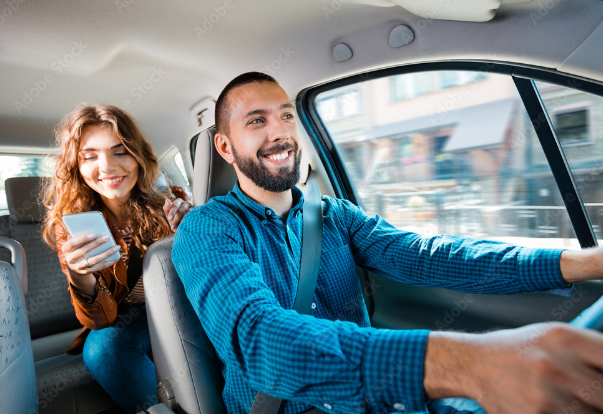Uber has 131 million monthly active users, while Lyft has 20.3 million monthly active users. About 14 million Uber trips take place every day. The rideshare market has increased by 12 times between 2017 and 2021 as more people rely on rideshare apps.Â
Despite how many people rely on these apps, incidents still happen. Here are a few tips you can use to ensure safe rides. With these tips, you can prioritize your safety before making a rideshare request.
Read on to learn more. Â
Check the Car and Driver
Before getting into the vehicle, verify the vehicle. Confirm that the vehicle’s specs match the details that appear in your rideshare app. Double-check the make, model, and license plate number before getting into the car.
This step is especially important if you’re visiting a busy venue or live in a larger city. Many cars look alike. Always check the license plate number before getting into the vehicle.Â
Many incidents occur because Lyft and Uber passengers get into the wrong car, which they mistake for their rideshare request. Both apps provide you with information before the vehicle arrives, allowing you to ensure your safety.
Both apps also provide you with the driver’s name and photo. Verify that the right driver has arrived before getting into the vehicle. The driver’s rating will appear within the app to help you determine if they’re a trusted driver.
If the driver looks different or you feel unsafe, cancel the ride.Â
Lyft and Uber drivers must meet company safety screenings. Drivers must complete training videos before they’re allowed to pick up passengers. If the driver gets into an accident, you’ll also be covered by the rideshare’s insurance policy.
Make sure to ask the driver who they’re supposed to pick up. Don’t state your name first.
Ride in the Backseat
Always get into the backseat when using Lyft or Uber.Â
Riding in the backseat will give you more space to fight off an assault. If you feel uncomfortable with the driver, don’t hesitate to ask them to pull over. You can discreetly add a stop to your route from the app.
Use Emergency Assist
Both apps use GPS to monitor rides. The app can even contact you if the driver goes off-course. Lyft will also contact you if the driver stops for too long.
Both automated systems can help you remain safe, especially if you’re in an unfamiliar area or city.
Both apps also provide users with a button to request emergency assistance. For example, Uber allows you to call 911 through the app. You can even share your location through the app if you need assistance.Â
Lyft partners with ADT to call 911 on your behalf. The app will also describe the vehicle you’re in.Â
Check With a Friend
Before using a rideshare app, contact a friend. Let them know where you are and where the rideshare is supposed to drop you off. Let them know your ETA as well.
When you arrive at your destination, text or call your friend to let them know you’re safe.Â
Use Your Seatbelt
Always wear your seatbelt when getting into a rideshare. If the seatbelt doesn’t work, let the driver know and sit somewhere else.
If there are no available working seatbelts, cancel the ride and inform the company that the seatbelt was malfunctioning. Remember to always prioritize your safety when making rideshare requests.Â
Trust Your Gut
Always trust your gut. If you feel uncomfortable or unsafe, say something.Â
If the driver appears to be under the influence of drugs or alcohol when they pick you up, don’t get into the vehicle. Inform the rideshare app right away.Â
If the driver makes inappropriate comments or sexual overtures, ask to be let out of the car. Make sure they drop you off somewhere safe. If you feel like you’re in danger, use the emergency alert through the app or call 911.
Call a Lawyer
While many people rely on rideshare apps, they’re not always safe. Cities regulate taxis and taxi drivers; they don’t regulate rideshare drivers. As a result, incidents can occur, including:
* Car accident injuries
* Robbery
* Sexual assault
* Stalking
* Assault
* Kidnapping
Some Uber and Lyft drivers make the mistake of getting into the wrong vehicle. Others travel with low-rated drivers who haven’t been removed from the app yet.
Some drivers fail to take the necessary precautions. For example, they neglect to look out for road safety and collisions that can lead to other accidents. Some accept intoxicated or unpredictable passengers (especially at night) which can lead to crashes.
These drivers also don’t have to worry about insurance gaps.
Record as much information about the vehicle and driver as possible. Both rideshare apps will also collect this information for you. If there’s an incident, report it to both the rideshare company and the police as soon as possible.Â
If an incident occurs while you’re a passenger, don’t hesitate to contact a personal injury or auto accident attorney. They can fight with your best interests in mind.Â
You can get a rideshare accident attorney here. Even if you’re unsure about whether you have a case, call. A consultation can help you make an informed decision regarding your future.Â
Find Trusted, Safe Rides With These Tips
Prioritize your well-being and safety before trusting rideshare apps. With these tips, you can find peace of mind choosing safe rides. Remember, if there is an incident, your trusted lawyer is only a phone call away.
Searching for more useful guides? You’ve come to the right place.
Check out our latest articles today.





























